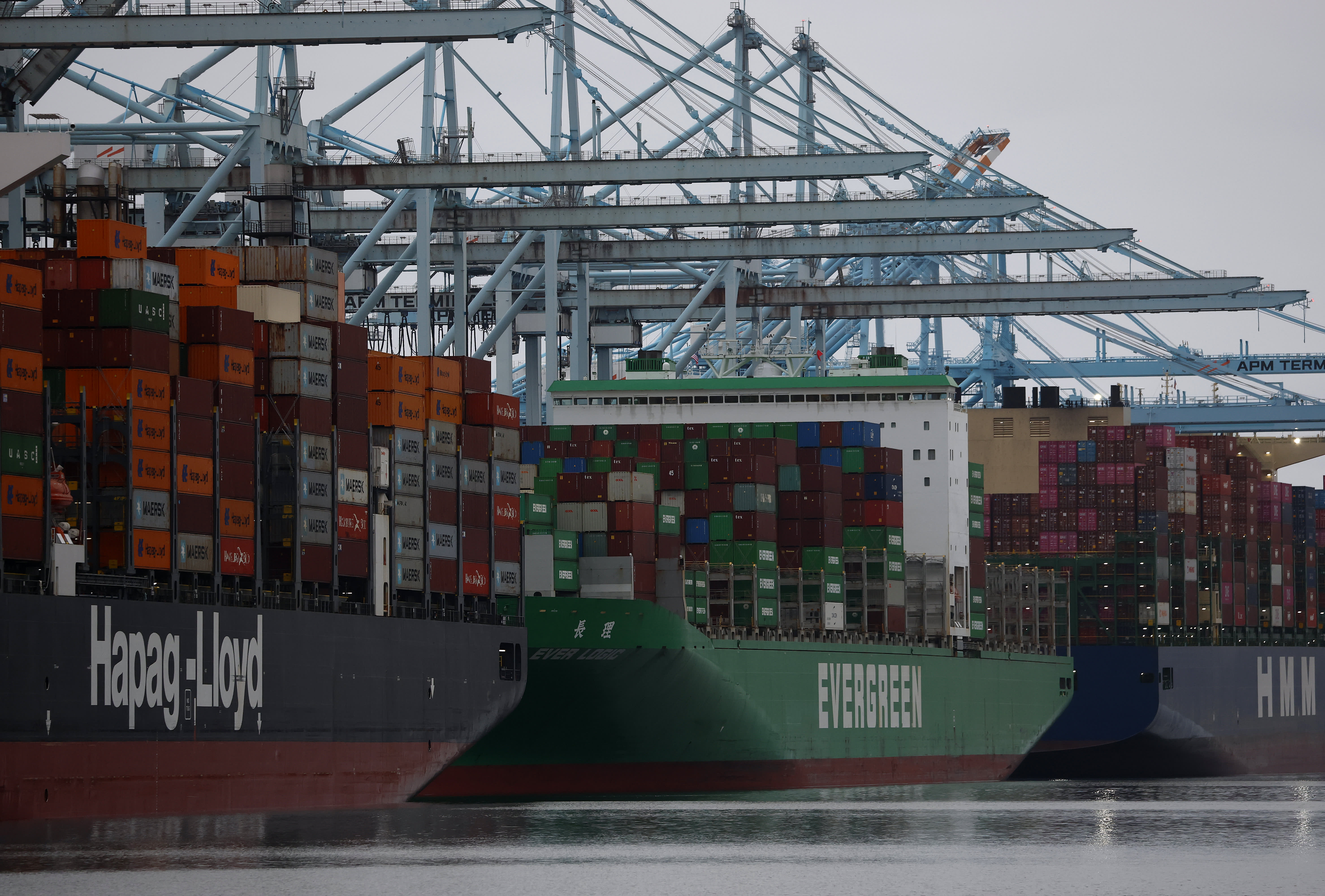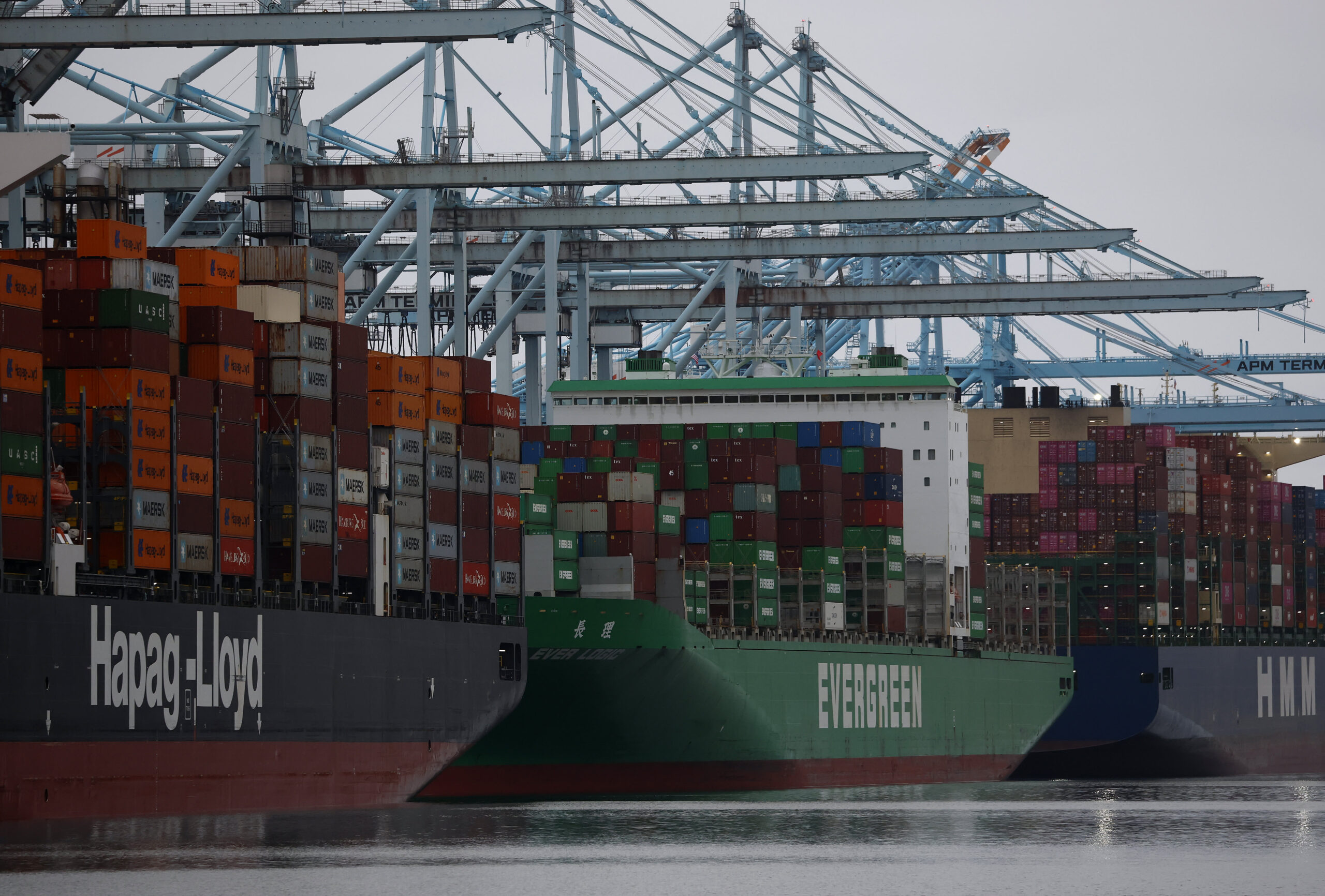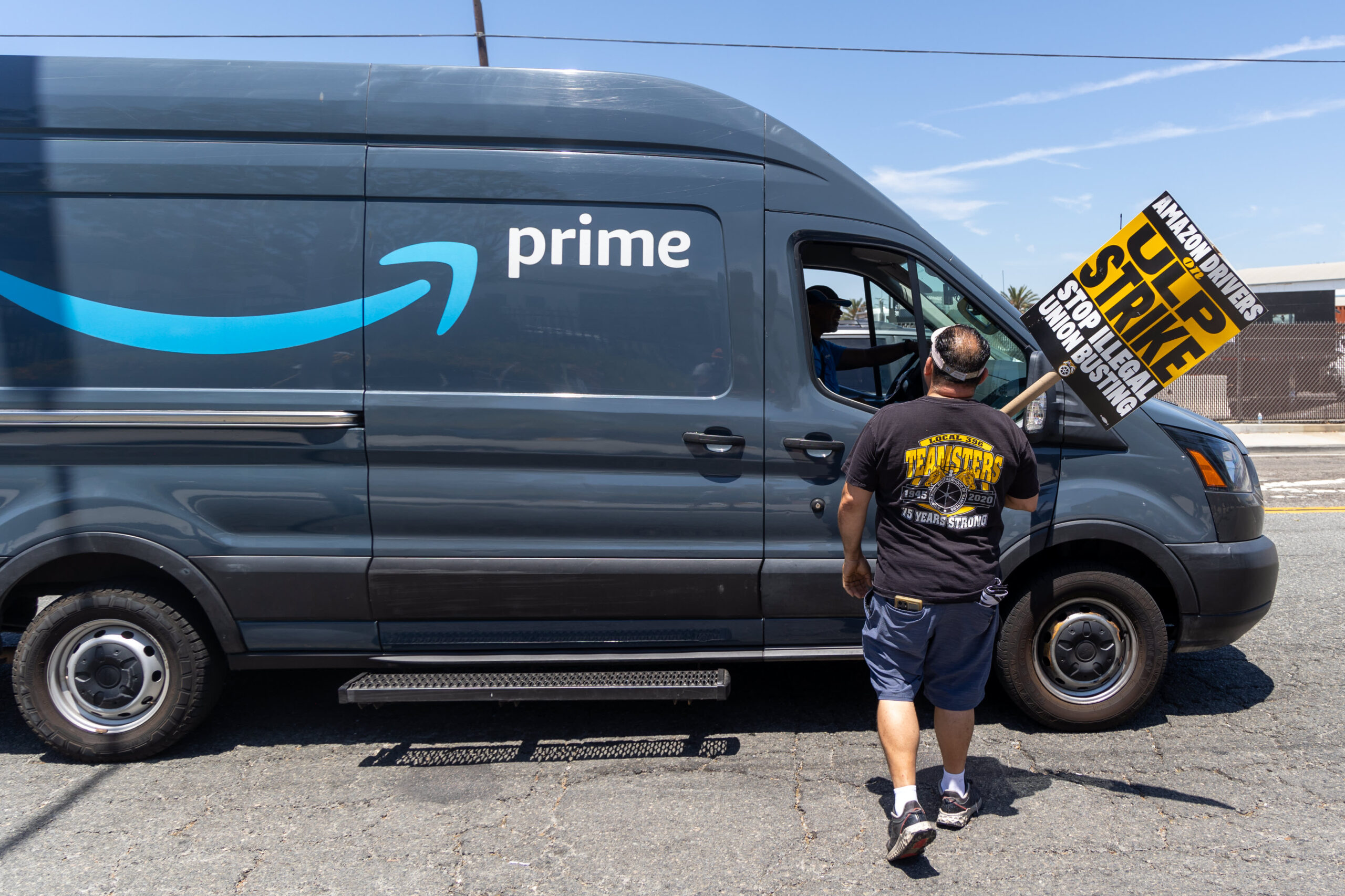
Upwards of 12,000 shipping containers that are subject to the 145%-plus tariffs levied by President Trump are on the first flotilla of Chinese freight vessels arriving at the Ports of Los Angeles and Long Beach.
A total of seven vessels that left China after the announcement of the 145%-plus tariffs are currently at the nation’s two busiest ports for container traffic from Asia, according to vessel arrivals tracked and aggregated by MarineTraffic. An additional five freight ships are expected to arrive in the coming days.
Amazon, Home Depot, Ikea, Ralph Lauren and Tractor Supply are among the companies with Chinese goods in these containers, spanning a wide range of consumer items.
In addition to housewares, apparel, and furniture, Amazon imported a wide variety of products on behalf of sellers, including refrigerators, deep fryers, mousepads, bookshelves and living room sofas.
Tractor Supply shipments include portable drum fans, garden tools, and men’s work boots.
Lamps and ceiling fans have been processed through customs for Home Depot.
A Tractor Supply spokesperson referred CNBC to its recent earnings call on April 24 when the company pointed to “notable uncertainty” as a result of the tariffs. “Tractor Supply is actively working with its vendor and supply chain partners to navigate the impact of recently announced tariffs, while also monitoring the broader macroeconomic factors impacting its customers,” the spokesperson said.
Ikea furniture; Speedo swim goggles and swim caps; Procter & Gamble tissue holders; Samsung printed circuit boards, microwaves and refrigerator parts; Ralph Lauren sweaters, cashmere, and blazers; Dr. Martens Airwair footwear; Samsung microwaves and refrigerator parts; LG washing machines, air conditioners, ranges, refrigerators and dishwashers; Bauer Hockey sporting goods; Lenovo computer parts; auto parts for Valeo North America; and headsets and computer keyboards for Polaris, were all among the Chinese container goods.
For many of the companies, products in categories deemed as essential to replenish are brought in despite concerns about consumer demand and an economic slowdown.
Amazon said in a statement sent by email that it is working with its “broad, varied range of valued selling partners in our store to support them in adapting to the evolving environment while maintaining broad selection and low prices for customers.”
Home Depot is in a quiet period ahead of announcing its quarterly results, and referred CNBC to an existing statement citing “a fluid environment.”
“We, together with our vendors, are monitoring developments and will work closely to manage with the goal of being our customers’ advocate for value,” a Home Depot spokesperson said.
Chinese freight container traffic decline
Trump suggested on Friday, ahead of key trade talks, that he was willing to lower tariffs on China to 80%, a rate many businesses would likely still consider to be extremely high.
“80% Tariff on China seems right! Up to Scott B,” Trump said in a Truth Social post, referring to a planned meeting between Treasury Secretary Scott Bessent and counterparts from China in Switzerland this weekend.
Brian Bourke, global chief commercial officer at SEKO Logistics, told CNBC that his clients continue to struggle in understanding how all of the various tariff provisions are stacked, or in some cases cancel each other out.
“This confusion has led them to continually alter and update their scenario planning, freezing any other decisions for the business they would be making,” said Bourke. “Many of our clients priced and sold their products or projects prior to the tariff amounts being announced, and with the speed and severity as well as the quantity of new tariff provisions being announced, they are not able to change the pricing on items that have already sold and are arriving in May and June, or beyond.”
The number of freight vessels and shipping containers headed to the U.S. from China has plummeted since the tariffs announcement in early April.
Across the Asia-North America West Coast and Asia-North America East Coast trade routes, there was a total of 90 blank sailings across April and May, according to Sea-Intelligence. The Ocean Alliance (a freight consortium including Chinese-owned and operated COSCO and OOCL, Taiwan-based Evergreen, and French-owned CMA) accounted for 48 of those canceled sailings.
Bookings are down anywhere from 30% to 50%, according to logistics providers and ocean carriers.
In addition to decreased vessel sailings as a result of paused manufacturing orders from shippers and fewer containers to fill, ocean carriers are using smaller vessels to move trade. MSC, the largest ocean carrier in the world, along with the Gemini Alliance (comprised of Maersk and Hapag Lloyd), are among the freight companies using smaller vessels between the Asia-North America West Coast routes.
MSC has reduced its container capacity by 28% year-over-year, according to Sea-Intelligence data analyzing the impact of canceled sailings and vessel changes, while Ocean Alliance container capacity is down by 26% year-over-year.
Bourke said once shippers have finished bringing in what they consider essential stocks, they are in various degrees of “wait-and-see” mode with their supply chains, and continuing to cancel orders from China, which has led to widespread fears about product shortages and the potential for empty shelves. “What happens when safety stocks that had been built up disappear?” Bourke said.


